Cat Cow Pose - Marjaryasana-Bitilasana
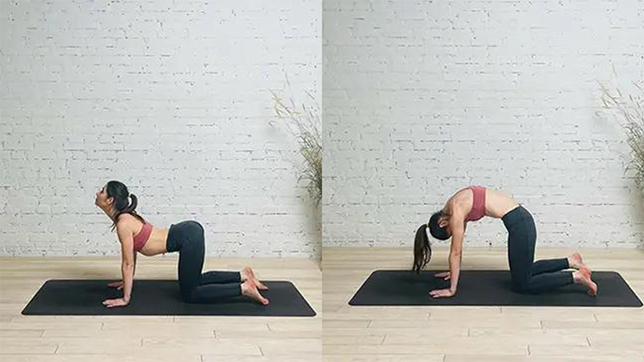
Contents
Cat-Cow Pose or Marjaryasana-Bitilasana in Sanskrit ( ‘marjari’ meaning ‘cat’, ‘bitila’ meaning ‘cow’, and ‘asana’ means ‘pose’) is a combination of two poses practiced together to gently warm up the spine and the abdomen for more challenging postures or is sometimes also practiced as a simple restorative pose. Coming on all fours, gently moving the back in a rhythmic way, and taking the position like that of a cat or a cow, releases the tensions around the spine and shoulders and tightens the abdomen to make a stronger core.
Cat Cow Pose is considered a base pose as Cat-Cow Pose variations can be derived from this pose. Cat-Cow Pose helps boost energy in the body and hence can be included in different yoga sequences. Cat-Cow Pose is considered a warm-up yoga pose to prepare the body for more intense yoga poses or flows.
Pose Detail
- Body Position: Backbend Yoga Poses
- Difficulty: Beginners
- By Type: Chest Opening Yoga Poses, Flexibility Yoga Poses
- By Benefit: Yoga Poses For Digestion, Yoga Poses For Periods, Yoga Poses For Stress Relief
Step-by-Step Instructions

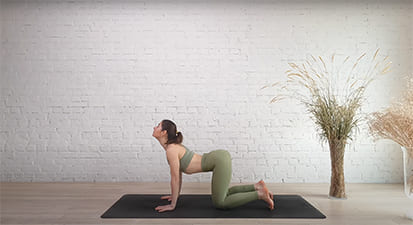

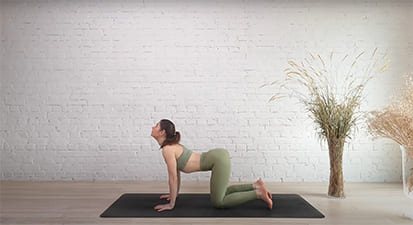

Benefits and Contraindications
Activates the Adrenal Glands
Activates the Pancreas
Keeps the Reproductive Organs fit
A great opening of the spine
Strengthens the arms and the shoulders
Deep stretch to the neck improves flexibility
Massages the internal organs thus improving digestion
Good for women during difficult times of menstruation
Helps in the treatment of insomnia as a restorative pose
Improves Posture
Weak wrists and shoulders
Injury at the shoulders
Weak or injured knees
Pregnant women to take guidance
Photo poses in different angles
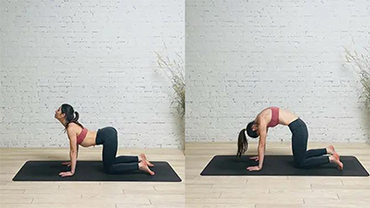
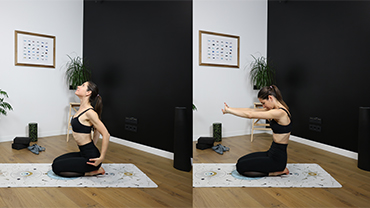

Tips
Practicing Cat-Cow can warm the body and prepare it for many activities. Keep the following information in mind when practicing this sequence:
- In Cat, let your head drop, releasing the back of your neck. Do not force your chin to your chest.
- Also in Cat, you can increase the abdominal massage and strengthening effects by drawing your belly button firmly in toward your spine.
- In Cow, let the movement start from the tailbone. Allow your neck and head to be the very last part of the movement.
- Keep your shoulder blades broad and draw your shoulders away from your ears. This helps to protect your neck during the movements.
- Be aware of your breath and its coordination with your movements. Imagine your breath traveling up and down your spine as you inhale and exhale, like an ocean wave flowing onto the beach and retreating.
Variation
Standing Cat Cow Pose
The traditional Cat-Cow involves moving between a rounded spine (Cat Pose) and an arched spine (Cow Pose) while on hands and knees.
In a standing variation, the principles of spinal flexion and extension might be applied while standing upright. For example, you could round your back and tuck your chin (similar to Cat Pose) and then arch your back, lifting your chest (similar to Cow Pose) while standing.
Start in a neutral standing position with feet hip-width apart and arms by your sides.
- Inhale: Lift your chest, arch your back, and gently tilt your pelvis forward, bringing your spine into extension. This is similar to the “Cow Pose” movement.
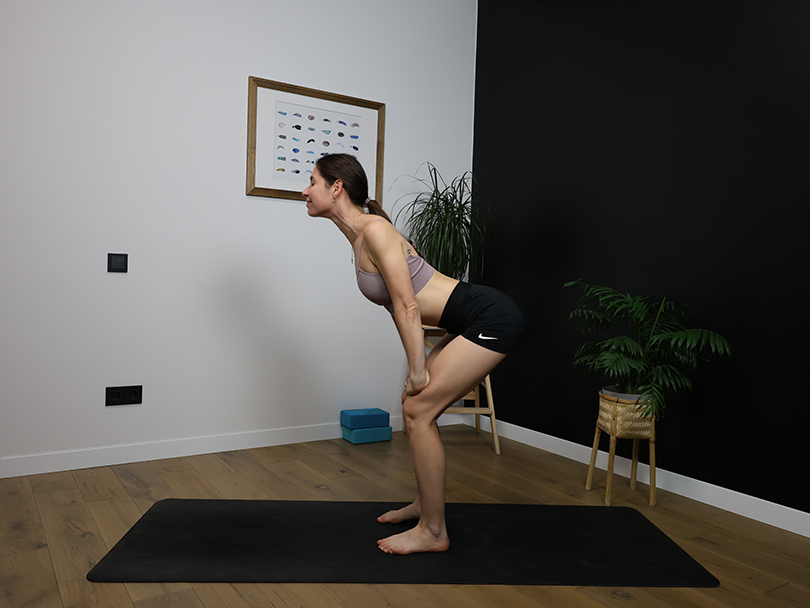
- Exhale: Round your back, tuck your chin to your chest, and engage your abdominal muscles, bringing your spine into flexion. This is akin to the “Cat Pose” movement.
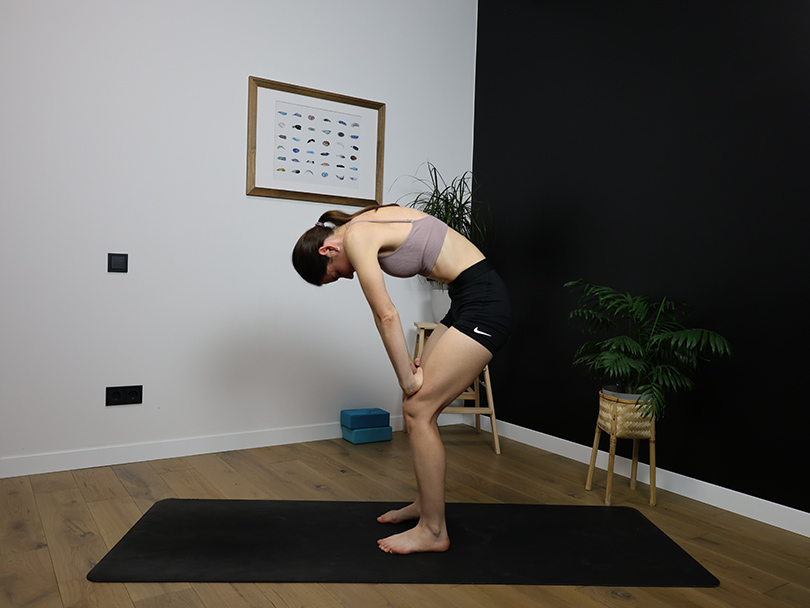
Repeat: Continue to flow between these two positions, coordinating your breath with the movement.
Seated Cat Cow Pose
In a seated variation, you might perform a similar sequence Cat Cow while sitting. Start in a comfortable seated position with a straight spine and hands resting on your knees or thighs.
- Inhale: Lengthen your spine, lift your chest, and gently arch your back, tilting your pelvis slightly forward. This corresponds to the “Cow Pose” movement.
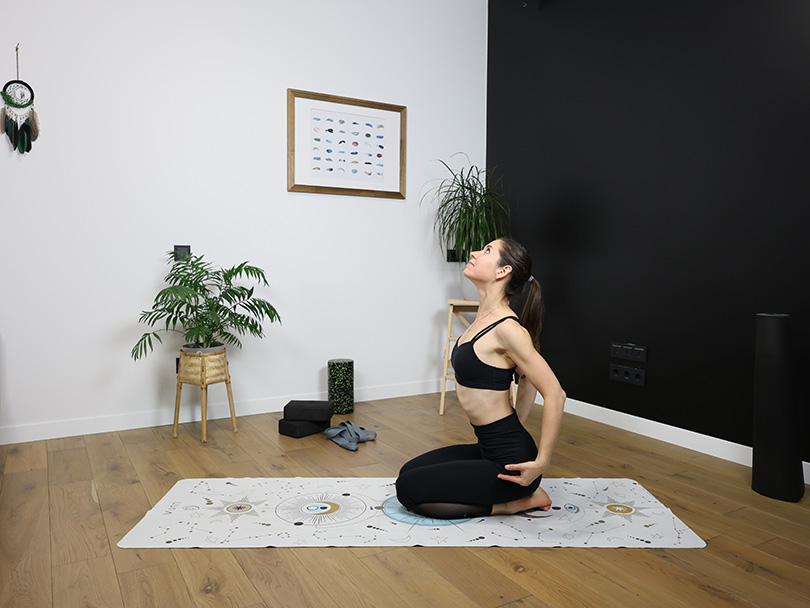
- Exhale: Round your back, tuck your chin to your chest, and engage your abdominal muscles, bringing your spine into flexion. This is similar to the “Cat Pose” movement.
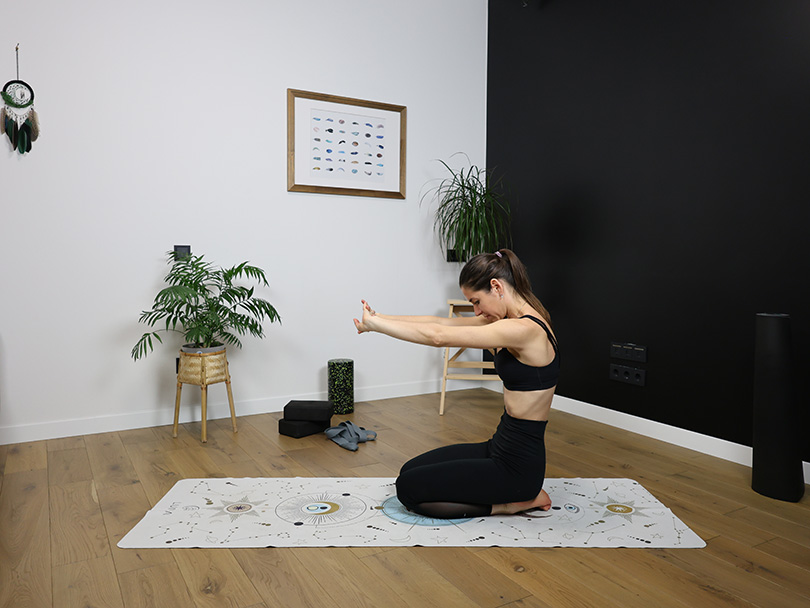
Repeat: Flow between these two positions, coordinating your breath with the movement.
Frequently Asked Questions
The Cat-Cow pose, also referred to as Marjaryasana-Bitilasana, is a frequently practiced yoga sequence known for its positive impact on spinal flexibility and mobility. While it may not serve as a direct treatment or cure for scoliosis, incorporating this pose into one’s routine can be a beneficial exercise for individuals managing scoliosis.
Generally, the Cat-Cow yoga pose is considered safe for most people, including beginners, and can be a valuable part of a yoga practice.
Yes, the Cat-Cow pose is considered a flexibility exercise, particularly for the spine. This yoga pose is a dynamic sequence that involves moving between two positions, Cat Pose (Marjaryasana) and Cow Pose (Bitilasana). The flowing movement helps improve flexibility and mobility in the spine.
ChatGPT
ChatGPT
In the conventional Cat-Cow yoga sequence, breath and movement are typically synchronized. A general guideline involves inhaling during one phase and exhaling during the other. The specific breathing pattern for Cat-Cow unfolds as follows:
During Cow Pose (Bitilasana), you generally inhale. As you arch your back, lift your head, and open your chest, the inhalation facilitates lung expansion and creates space in the front of the body.
Transitioning to Cat Pose (Marjaryasana), you exhale. Rounding your back, tucking your chin to your chest, and engaging your abdominal muscles, the exhalation complements the movement, enhancing the stretch in the spine.
Modifications & Variations
- Narrow Cat Cow
- Cat Cow Pose Knees Lifted
- Forearm Cat Cow
- Cat Cow Pose Block Thighs
- Rocket Cat Pose
- Cat Cow Pose Spinal Flossing Flow
- Cat Pose Variation Waist Side Bending